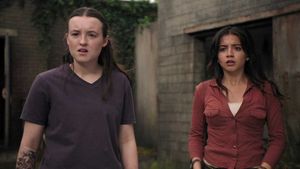(CNN) — While more Americans own homes today than a decade ago and the rate is increasing across all races, the gap between Black homeownership rates and that of any other race or ethnic group is even larger now than in 2011, according to a new analysis by the National Association of Realtors.
Across a slew of metrics, the challenges Black home buyers are up against are sizeable and showing little improvement.
The homeownership rate for White Americans in 2021 was 72.7 percent, but the rate for Black Americans was 44 percent, according to NAR's analysis of the most recent data. The homeownership rate for Asian Americans was 62.8 percent and for Hispanic Americans it was 50.6 percent.
All groups tracked in the research saw homeownership rates grow over the last decade, but the Black homeownership rate continues to lag far behind, ticking up only 0.4 percentage points in a decade while the rate for Hispanic Americans rose by 4 percentage points.
Homeownership in the United States reached its lowest level in 2015 and has steadily risen since to a rate of 65.5 percent of Americans owning homes in 2021. More Americans own homes than a decade ago, with about 9.2 million more homeowners today than in 2011.
But Black Americans have seen the smallest share of that growth. This results in what housing advocates and economists call a "racial homeownership gap" between the share of Black families that own homes and the share of White families that own homes. That gap is now 29 percent, compared to 26 percent in 2011.
Not all buyers have the same shot at homeownership or its wealth-generating prospects in the United States. The reasons include historical prejudice and redlining practices that continue today. Just this week, the Department of Justice secured a $9 million settlement to resolve allegations that Park National Bank in Ohio engaged in a pattern of mortgage lending discrimination by 'redlining' in Columbus, Ohio. Redlining is an illegal practice in which lenders avoid providing credit services to people in specific communities because of the race or national origin of the residents there.
But there are other causes, according to the NAR analysis, including the high cost of homeownership, the outsized cost burden on Black home buyers and additional discrimination in lending.
High cost of home ownership
Housing affordability tanked in 2022 as mortgage rates doubled from the year before and home prices hit all-time highs. Buyers now need to earn more than $100,000 annually if they want to purchase a median-priced home without going beyond their budget, according to the NAR report.
This higher barrier to entering home ownership disadvantages Black families, who had a typical net worth of $24,000 in 2019, compared to a typical White family with $188,200 — nearly eight times greater.
Buying a home also depends on the cost of housing where you live and its particular combination of housing costs, job security and wages. The homeownership rate for Black Americans varies from 15 percent to 55 percent across the country.
The states with the highest homeownership rate for Black Americans were South Carolina at 55 percent, Delaware at 54 percent, and Mississippi at 54 percent. In contrast, North Dakota (15 percent), South Dakota (25 percent) and Alaska (27 percent) had the lowest homeownership rates.
Meanwhile, the homeownership rate for White Americans ranged from 50 percent to 81 percent across the country.
Disparities in the home buying process
Nearly all home buyers, about 90 percent, finance the purchase with a mortgage. Black Americans are denied mortgages at a higher rate, with 20 percent of Black and 15 percent of Hispanic loan applicants denied mortgages, compared with about 11 percent of white and 10 percent of Asian applicants, According to NAR's analysis of Home Mortgage Disclosure Act data.
Looking at Black Americans alone, the denial rates spike higher when it comes to home improvement loans, with 51 percent denied, according to the report.
Low income seems to be the main reason that more Black households were denied mortgages in these areas. In states with a denial rate higher than 20 percent, the median income of Black applicants was $59,160 on average. The states with the highest denial rates for Black Americans in 2021 were Mississippi at 29 percent, Louisiana at 25 percent, and South Carolina at 25 percent.
In addition, bias in home appraisals can also disadvantage Black home buyers and home owners.
NAR looked at home appraisal data from the Federal Housing Finance Agency and compared the valuation of homes located in areas that had a low level of minority residents and areas that had a high level and found that more homes were undervalued in areas with high levels of minority residents.
In 2021, 23.3 percent of homes in high-minority areas experienced undervaluation, while 13.4 percent of homes in low-minority areas did. NAR estimated that the median appraisal value was 11 percent lower in areas with more compared to homes in areas with fewer minorities.
Black Americans are more cost burdened
Among all races, Black homeowners spend more of their income in order to own their homes, according to the NAR report.
Generally, a common financial rule of thumb is to not spend more than 30 percent of your income on housing costs. Nearly 30 percent of Black homeowners are at that threshold, accounting for 2 million families. Only 21 percent of White home owners are cost burdened in that way.
Many Black renters who are trying to become homeowners are also cost burdened, making saving for a home difficult. Over half of Black renters spend more than 30 percent of their income on rent. And about 30 percent of Black renters spend more than 50 percent of their income on rent, representing nearly 2.5 million households.
By comparison, only 22 percent of White renters spend over half of their income on rent. This translates to about 5.1 million White renter households.
According to the report, the driver of Black renter households being more cost-burdened is that although they have a lower income — typically about 30 percent lower — than White renters, their monthly rent isn't significantly lower than that of White renters.
The median income of Black renters was $32,600, compared to $45,310 for White renters in 2021 and the average monthly rent was $1,050 for White households, compared to $855 for Black renter households. While rental cost is expected to rise even further in 2023, the report said, it will be more difficult for Black renter households to save for a down payment for a home purchase.
With mortgage rates double what they were a year ago, more buyers, including Black home buyers, have been pushed out of home ownership. With average rates for a 30-year, fixed-rate loan currently at 6.5 percent, few renters can currently afford to buy the typical home.
While 17 percent of White renters can afford to buy the median-priced home, only 9 percent of Black renters can do so nationwide, NAR estimated, and concluded the homeownership gap between White and Black households will continue to persist.
The-CNN-Wire
™ & © 2023 Cable News Network, Inc., a Warner Bros. Discovery Company. All rights reserved.
- The Racist Reality Behind a Neighbor Calling the Cops on a 9-Year-Old Black girl ›
- Racial Trauma: the Mental and Emotional Injury of Racism Explained ›

















































